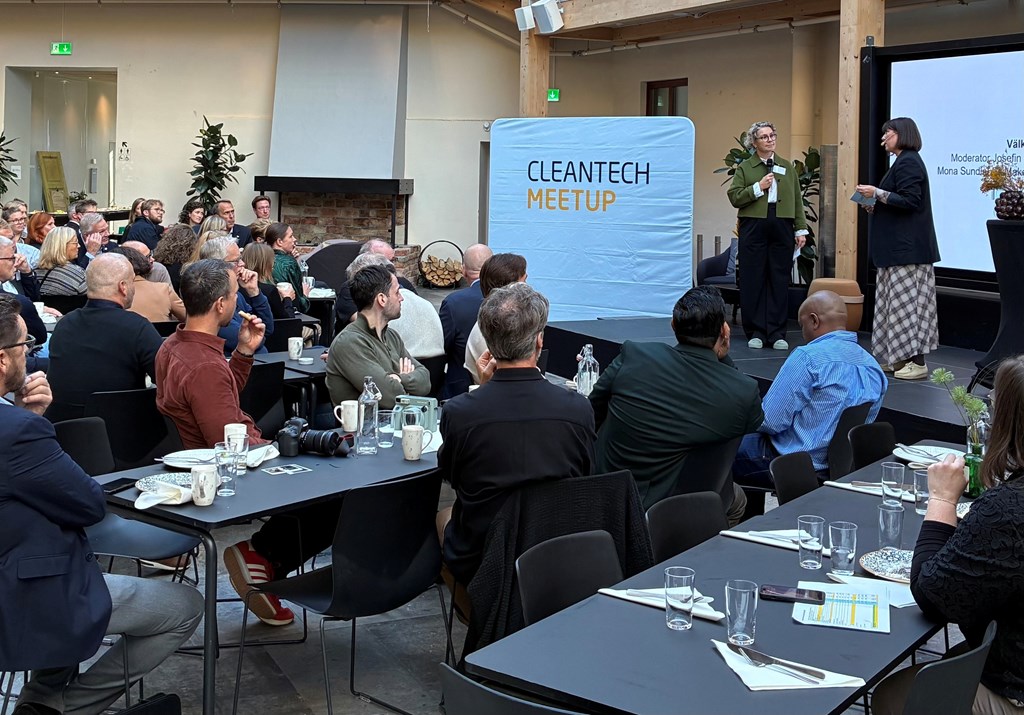
Collaboration and Transparency in Focus at Cleantech Meetup in Sundsvall
Companies, researchers, municipalities, and investors came together for Cleantech Meetup – northern Sweden's hub for green technology, clean energy, and sustainable solutions. The theme, “Industrial Symbiosis and Financing – Tools for Circular Business Opportunities and Innovation”, highlighted how collaboration and openness can turn ideas into circular business models.
Industries as Hubs for Circular Flows
Creating industrial sites where companies want to establish themselves and collaborate is central to the region's circular ambitions. High Coast Innovation Park, Ånge Municipality, Umeå Eco Industrial Park, and Sundsvall Energi showcased how actors can maximize resources and knowledge when they gather in the same location. Helena Näsström, Project Manager at RISE Processum, part of High Coast Innovation Park, noted that shared industrial sites facilitate collaboration and resource efficiency.
“Collaboration saves time and energy, and it's efficient when many organizations are located in the same area,” says Helena.
Building symbioses, however, is not always easy. It requires commitment, transparency, and persistence from all parties. Mikael Källgren, Head of Renewable Energy at SCA, and Linda Lejderud, CEO of Sundsvall Energi, shared how their long-term work with open dialogue and cooperation—including addressing tough issues—has been crucial in creating functioning solutions.
“We put all the elephants on the table so we could talk about them,” says Linda Lejderud, CEO of Sundsvall Energi.
Symbiosis in Practice
Companies at the event demonstrated how collaboration, transparency, and clear goals translate into practical results. Liquid Wind, Ecohelix, and Velarion Group showed how clarity around resources, needs, and long-term objectives creates effective symbioses, leading to both more efficient processes and new business opportunities.
Collaboration, clear value chains, and transparency not only simplify daily operations but can also make it easier to secure financing. Fredrik Blomqvist Lundli from Fund Forward, which invests in the circular economy, highlighted that actors well integrated into value chains may have advantages when seeking investment, as openness makes potential easier to assess.
At the same time, the business model itself is central to ensuring the symbiosis works in practice. Oskar Schmidt, CTO of Ecohelix, emphasized that it must serve as an incentive for all parties—the company, the customer, and the partner—to create value throughout the chain.
“Symbiosis is not just about building a new product; it's about creating relationships and value across the board,” says Oskar.

Oskar Schmidt, CTO of Ecohelix, highlighted how long-term relationships and shared incentives are key to successful symbioses.
Small-Scale Actors Leading the Way
Industrial symbiosis is relevant for both large and small players. During the day, Simplify Plast demonstrated how plastic waste can be transformed into sustainable construction panels on site, Biocompost showed how organic waste becomes nutrient-rich fertilizer in just five days, and Collecct presented its digital platform for efficiently collecting, sorting, and reusing resources.
Together, these examples illustrate how both major industries and small entrepreneurs contribute to the same goal: building a sustainable, circular ecosystem where transparency and collaboration drive innovation and business development.
Transparency as a Prerequisite for Success
Discussions at Cleantech Meetup clearly showed that transparency is not just a buzzword—it is the foundation for making circular business models and industrial symbiosis work. Success requires time, commitment, clarity, and courage, but the reward is sustainable and profitable business.
The event was organized through the project Innovation for Green Transition, click here to read more about the project!
